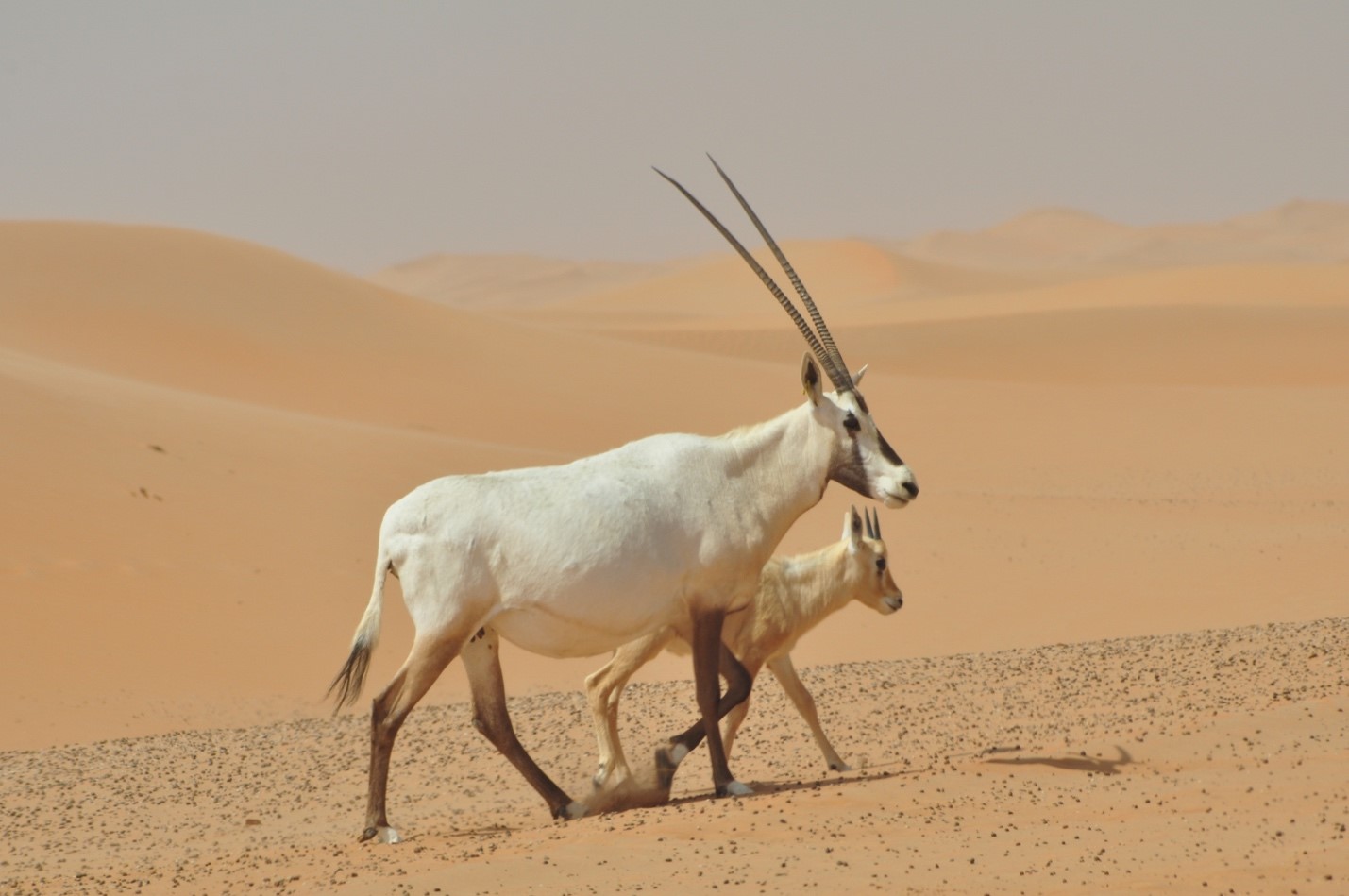The Houbara Bustard
Name: The Houbara Bustard
Scientific Name: Chlamydotis macqueenii
Arabic Name: حبارى اسيوي
Description: The Houbara bustards are large-bodied birds with long legs and a slender neck, and are split into two distinct species, namely the Asian Houbara and The African Houbara. The Houbara is quite shy and rarely uses its voice, often spending most of their time on the ground searching for food. They are famous for their dance which is a part of the male extravagant mating rituals. These birds are not just part of our environment, but they are also part of culture and heritage.
Key Threats: Unfortunately, this lovely bird is endangered. Poaching, unregulated hunting, habitat loss through urbanization and agriculture, and habitat degradation through overgrazing, are some of the greatest threats and challenges facing the houbara bustard.
Conservation: Everyone plays a role in saving the Houbara. You can take part by educating others around you about this beautiful species. Bright lights and loud noises disturb wildlife, so try to be respectful of species that are non-homo sapiens when you visit the desert.
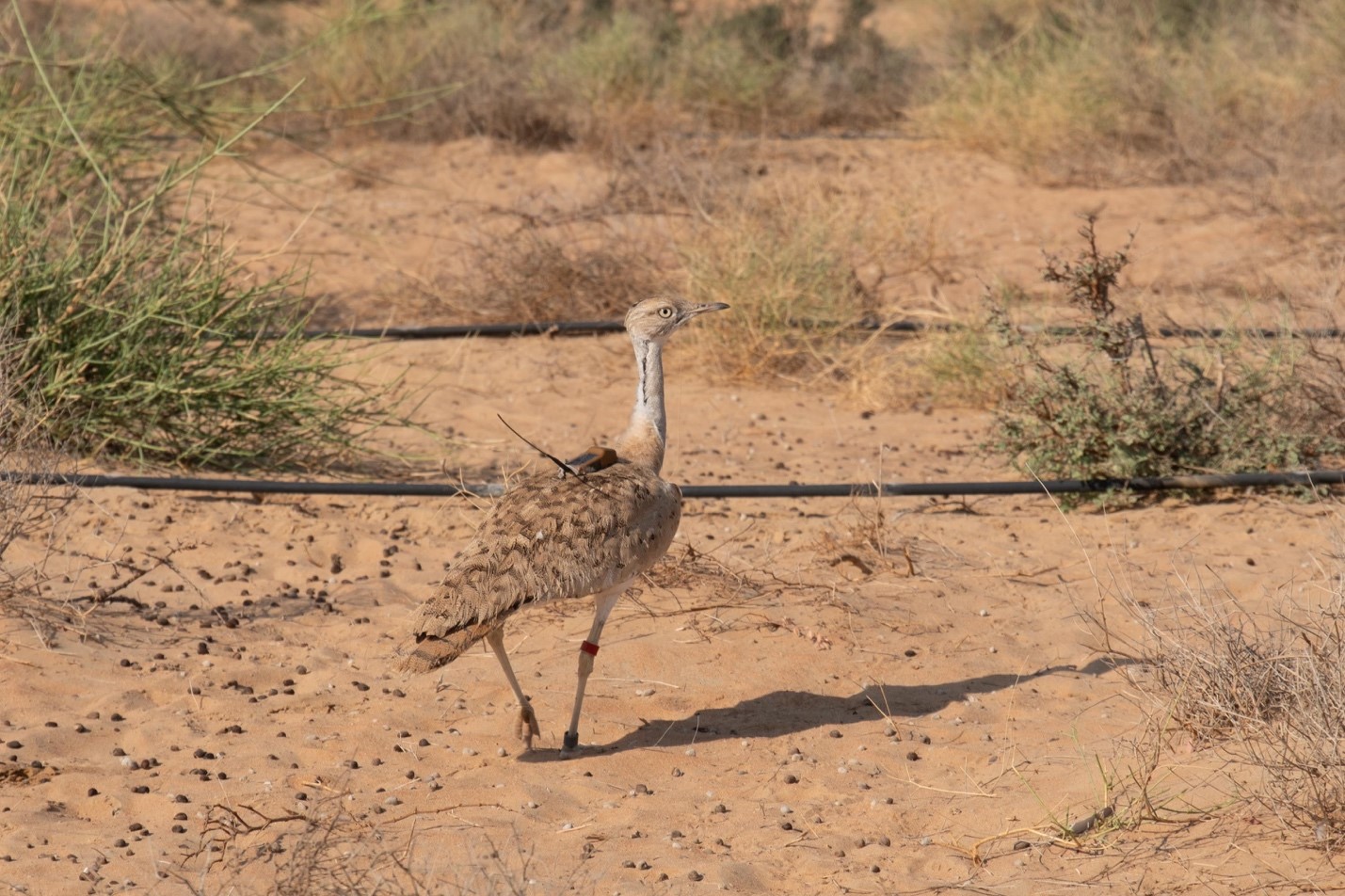
The Ghaf Tree
Name: The Ghaf Tree
Scientific Name: Prosopis cineraria
Arabic Name: شجرة الغاف
Description: The beautiful, valuable Ghaf is the evergreen tree of the desert, that can live up to 120 years! In 2008, it was declared as the national tree of the UAE because of its great cultural and traditional significance. The Ghaf is a drought-tolerant tree, able to withstand the harsh desert environment and still remain green. It can be found on low sand dunes and its presence is an indicator that there is water underground.
Key Threats: The tree is under threat due to:
- Urbanization and infrastructure development resulting in habitat loss
- Overgrazing by camels and goats
- Climate change
- Excessive groundwater extraction around the trees
- Overuse of its resources (i.e. wood and leaves)
- Invasive species, such as the Mesquite tree from Central America that was intentionally introduced to help forestation efforts in Abu Dhabi but ended up contributing to the threat of the Ghaf by suffocating it
Conservation: The late Shaikh Zayed Bin Sultan Al Nahyan has given great importance to the Ghaf and made it illegal to cut down the tree. You can do your part to help the Ghaf too, by making sure you do not utilize Ghaf timber, and by planting the native local species in your garden
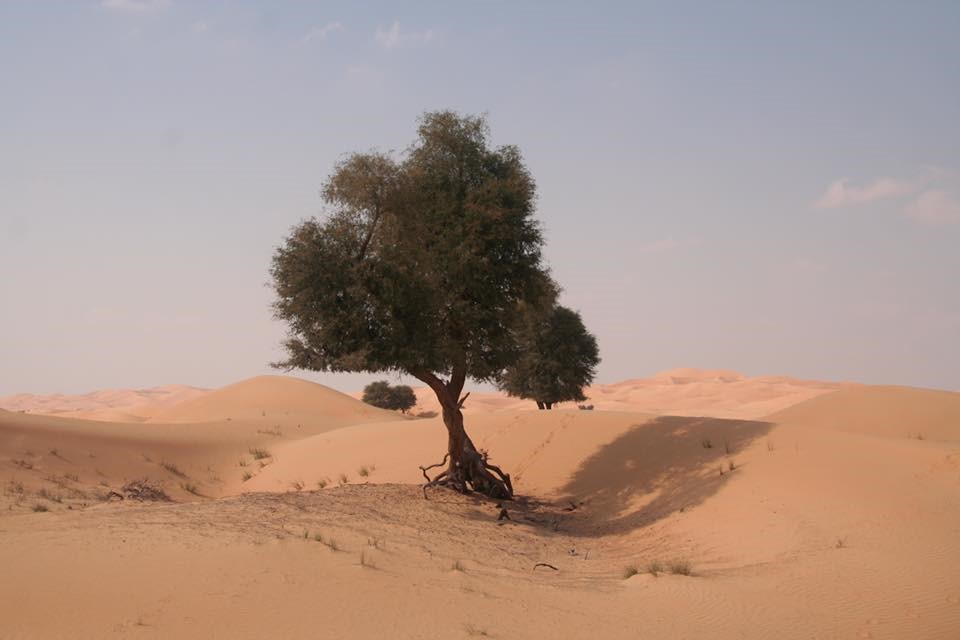
The Dhub
Name: Spiny-tailed Lizard
Scientific Name: Uromastyx aegyptia leptieni
Arabic Name: Dhub ضب
Description: Native to the UAE and other regions of the Middle East such as Saudi Arabia, Jordan and Egypt, the Spiny-tailed lizard, locally known as the ‘Dhub’, can live up to 80 years! They live in deserts, bushes, and burrows, and are vegetarian 99% of the time, mainly feeding on herbs and grasses. They can go for weeks without eating because of their slow metabolism, which also extends the species' lifespan.
Key Threats: These lizards are under threat in the UAE, especially from dune bashing over their burrows. So, do be careful when you are out into nature!
Sadly, the Dhub is under threat from:
- Recreational activities, such as dune bashing and real estate development
- Unsustainable collection for food, traditional medicine
- Pet trade, and so they have been banned from hunting
Conservation: You can take part in protecting the Dhub by being careful when you go out in nature to not destroy their burrows with dune bashing and leaving no trace of waste such as plastic bags and packaging.
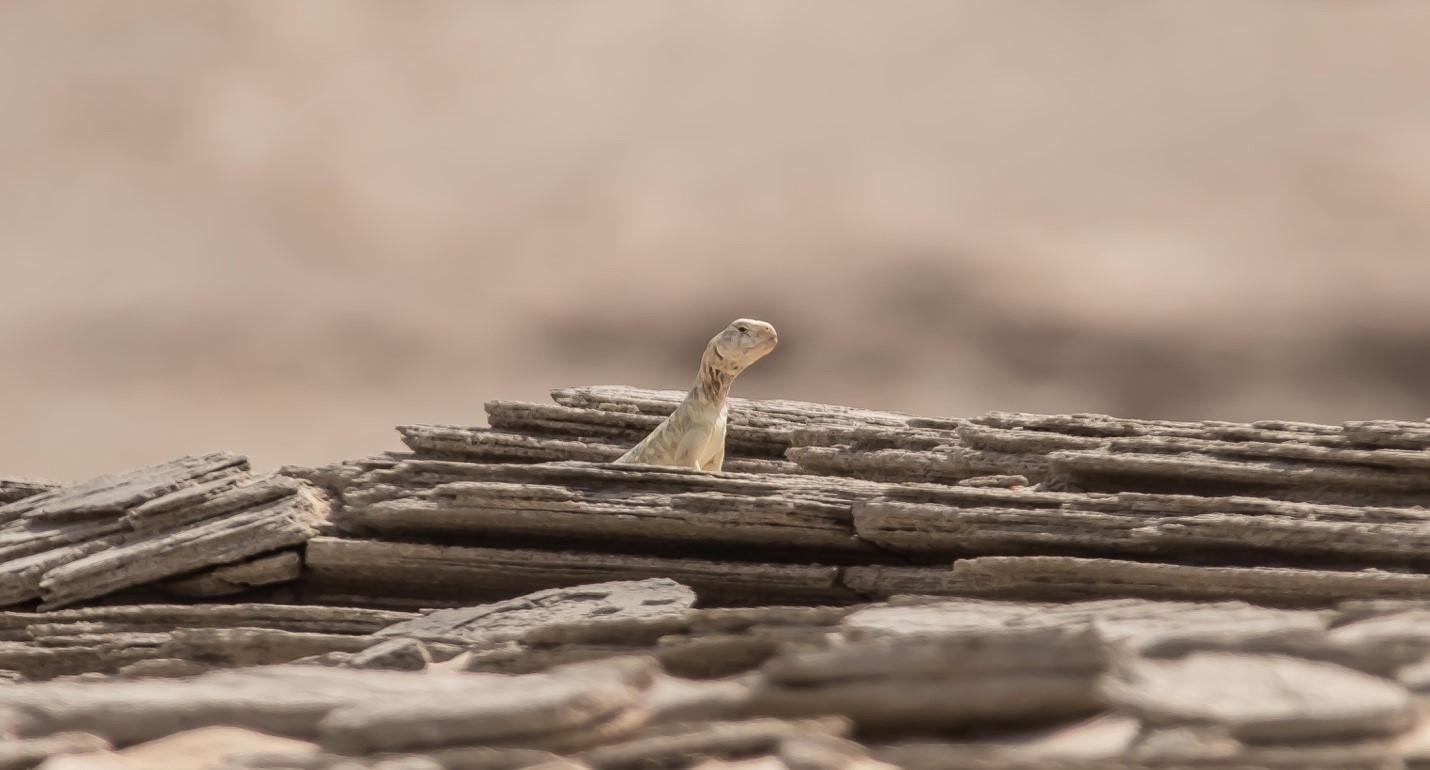
The Dugong
Name: Dugong
Scientific Name: Dugong dugon
Arabic Name: الأطوم/ بقرة البحر
Description: The Dugong, commonly known as the “sea cow”, is strictly a marine mammal that grazes peacefully on sea grasses in shallow coastal waters of the Indian and Western Pacific Oceans. It can eat up to 40 kgs of seagrass every single day! The Arabian Gulf has the second largest Dugong population in the world after Australia.
Key Threats:
- Habitat loss and degradation
- Climate Change: especially via destroying seagrass habitats (their food supply)
- Fishing pressure, including incidental bycatch and ghost nets
Conservation: Drive slowing when boating to avoid injuring or disturbing Dugongs. Also, be careful with your anchor as it can damage the seagrass meadows. Additionally, cut down on how much fish you eat, and make sure you only buy sustainable seafood. You can also prevent water pollution by using fewer pesticides and artificial fertilisers in landscaping and agriculture.
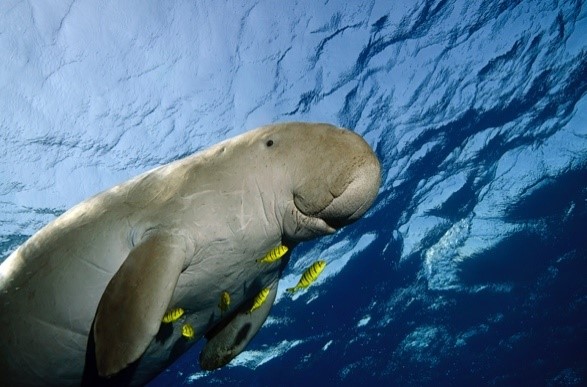
The Hamour
Name: Brownspotted grouper
Scientific Name: Epinephelus chlorostigma
Arabic Name: هامور -Hamour
Description: The name Hamour is used to describe a number of closely related fish species in the Arabian Gulf including the Brownspotted grouper. There are 11 different species that are commonly referred to as Hamour. These species are aggressive predators and considered to be at the top of the food chain in their natural habitat, the coral reef.
Key Threats:
- Habitat loss
- Overfishing
Conservation: Moving towards a more plant-based diet or otherwise eating seafood that is certified as sustainable, will help this group of fish species to recover.
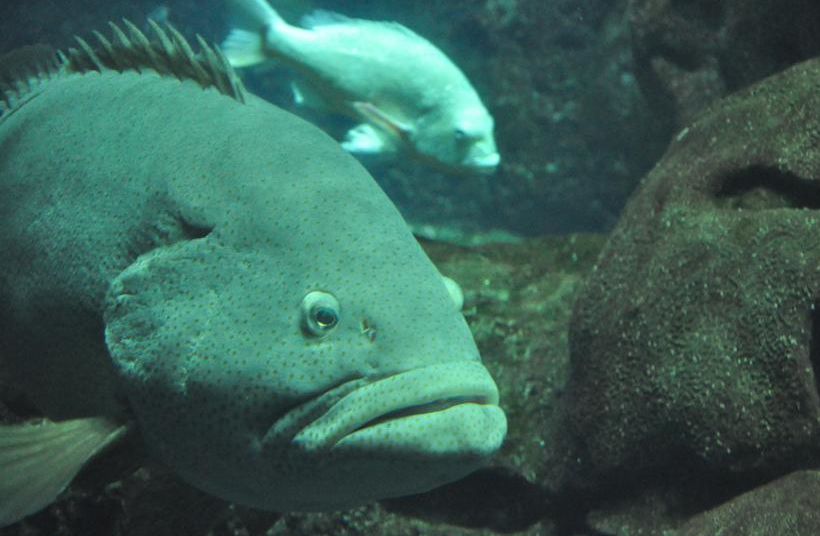
The Arabian Tahr
Name: Arabian Tahr
Scientific Name: Arabitragus jayakari
Arabic Name: الطهر العربي
Description: The Arabian Tahr is a goat-like species native to Eastern Arabia. It is the smallest species of its kind, with a stocky build and backward-arching horns. The Arabian Tahr are quite shy. They are comfortable with people till an approximately minimum 100m distance - being extremely confident climbers, if they foresee a threat at that distance, then can quickly climb up the slope of the wadis/valleys. The Tahr need to drink water only every 2-3 days, but the scarcity of water is still a major threat, as a lot of the water in wadis is being channeled off for farms.
Key Threats: Habitat destruction, hunting, predation, climate change
Conservation: Feral goats and donkeys compete with the Tahr for food and water, and dogs have also been known to chase the Tahr, so make sure to keep your animals under control. Save water when you can, to ensure that the natural springs do not dry up.
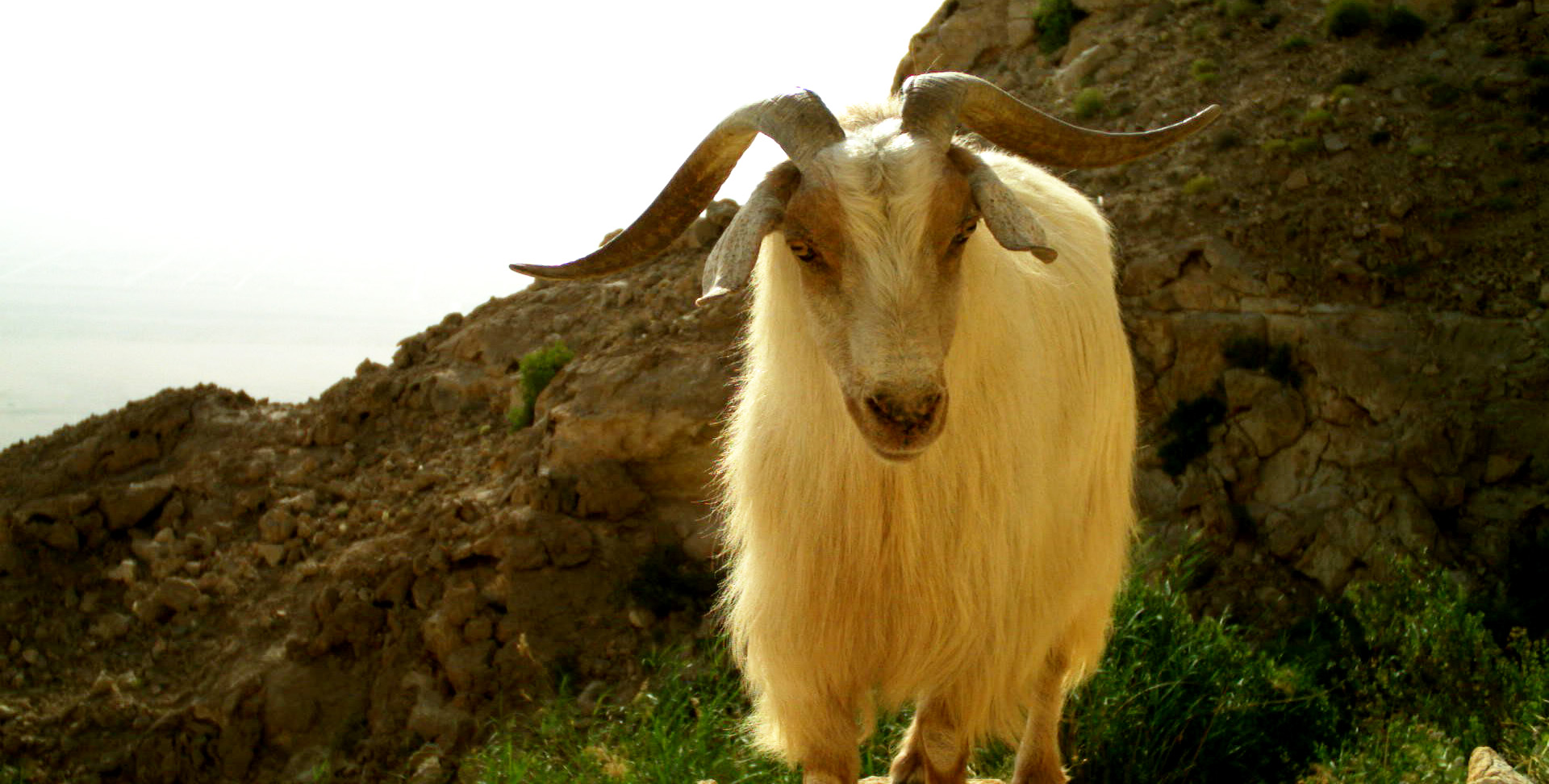
The Asian Dwarf – Honeybee
Name: The Asian Dwarf Honeybee
Scientific Name: Apis florea
Arabic Name: نحل العسل / النحل البري
Description: The Asian Dwarf or the Arabian Dwarf Honeybee is a tiny red-brown bee that is quite small in size, when compared to other honeybees. A colony can contain around 5,000 individual bees. They are characterized by their external nesting habits, as well as their single comb that are found on tree branches, thereby, making them vulnerable to predators. Their habit of open-air nesting also makes it difficult to domesticate them, and since they are not aggressive, they can stay undetected for a long time, despite their external nesting.
Key Threats: Due to urbanization and development in UAE, the Asian Dwarf are facing many threats. One is the loss of their natural habitat, the other is the effect of heavy use of pesticides, when these honeybees make their way into people’s gardens during the swarming seasons.
Conservation: Honeybees are an important pollinator. If you discover a beehive in your garden, protect them, and do not call pest control! Planting native wildflowers and opting to buy food that is cultivated without harmful pesticides, also helps to save our bees.

The Grey Mangroves
Name: Grey Mangrove
Scientific Name: Avicennia marina
Arabic Name: Al Gurm / شجرة القرم
Description: This resilient tree acts as a natural windbreak, protecting us against tidal surges and purifying the surrounding water. It is also highly effective in storing carbon dioxide from the atmosphere, thus contributing to the fight against climate change - the older the tree, the more efficient it is at carbon sequestration. Mangroves also provide a safe, sheltered home for hundreds of bird and marine species, which aids biodiversity and helps to increase fish stocks.
Key threats: Climate change, building development and dredging.
Conservation: Look for sustainable alternatives to eating farmed shrimp from mangrove sites. Find local conservation and government organizations in your area that are working to conserve mangrove forests and help by supporting them.
Abu Dhabi efforts: Abu Dhabi’s coastal areas are richly lined with mangrove forests. There are already an estimated 70 square km of mangrove forest across the Emirate. The Mangrove National Park has more than 19 square km of forest. Found within the city of Abu Dhabi, this park is a dense, luxuriant concentration of mangrove trees, protected by law.
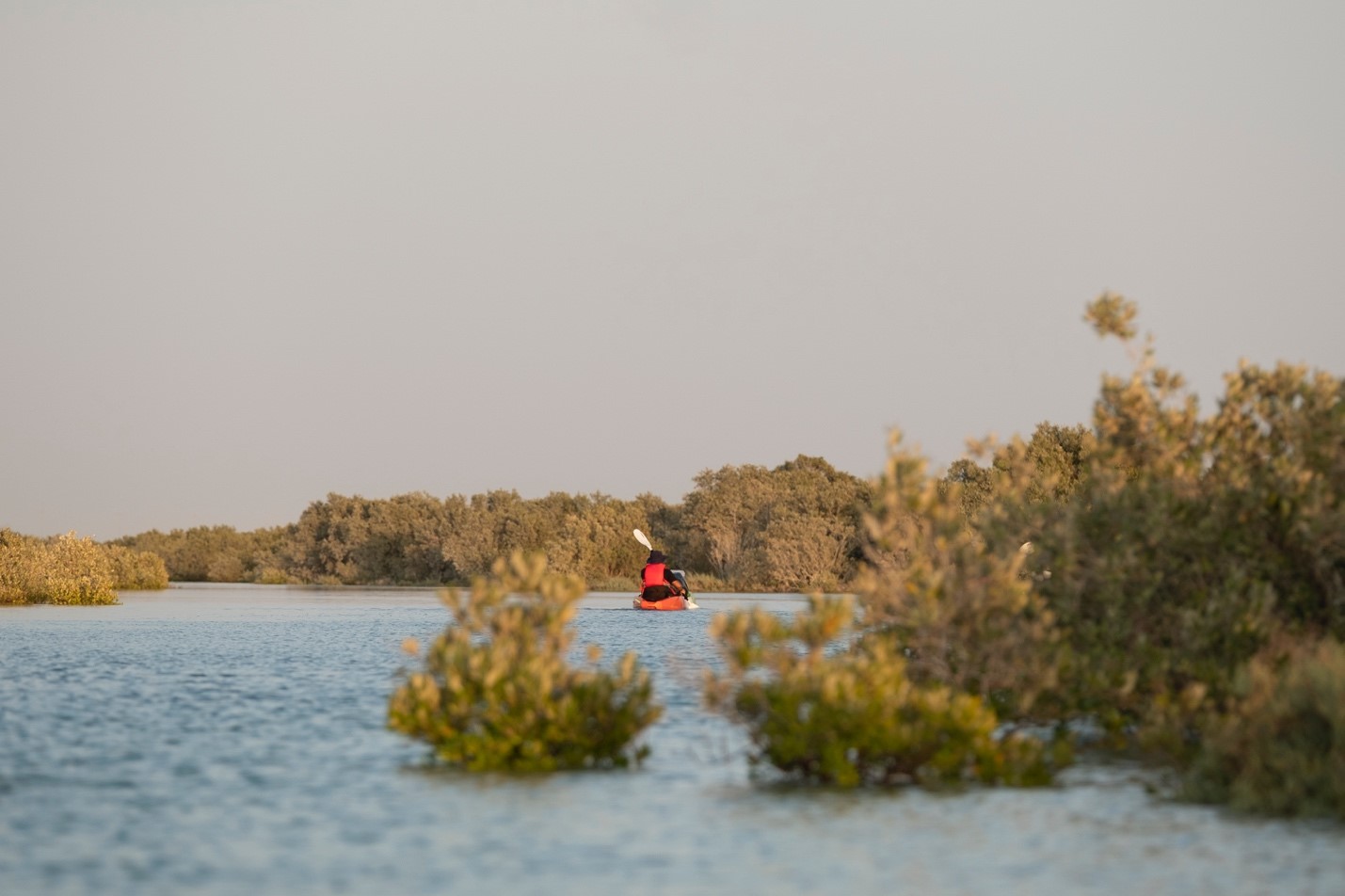
Greater Spotted Eagle
Name: Greater Spotted Eagle
Scientific Name: Clanga clanga
Arabic Name: العقاب المنقط الأكبر
Description: The greater spotted eagle, at times, simply referred to as ‘spotted eagle’, is a large brownish-coloured bird of prey, feeding on animal flesh – a carnivore! This migratory bird winters in the UAE and can also be found in central and eastern Europe, North and East Africa, the Middle East, the Arabian Peninsula, India and East and Southeast Asia. These birds are top predators in their ecosystem, controlling populations of small mammals and other small vertebrates. Unfortunately, they are now identified as vulnerable species, and getting low in numbers.
Key Threats: The eagle is vulnerable to extinction because of threats such as:
- Habitat loss as a result of urban and industrial expansion
- Human Disturbance, specifically during the mating season
Conservation: Protecting migratory birds and ensuring environments contributing to their reproduction and safe migration are crucial if they are to be made safe from extinction. You can help by ensuring that we don’t allow this to happen.
- Protect eagle habitats. Notify your local wildlife agency if you observe a disturbance in an eagle nest habitat area by an individual or a corporation
- Keep safe distances from their nests and roost site so as not to disturb eagles
- If a nest is blown from a tree, help monitor and protect the area
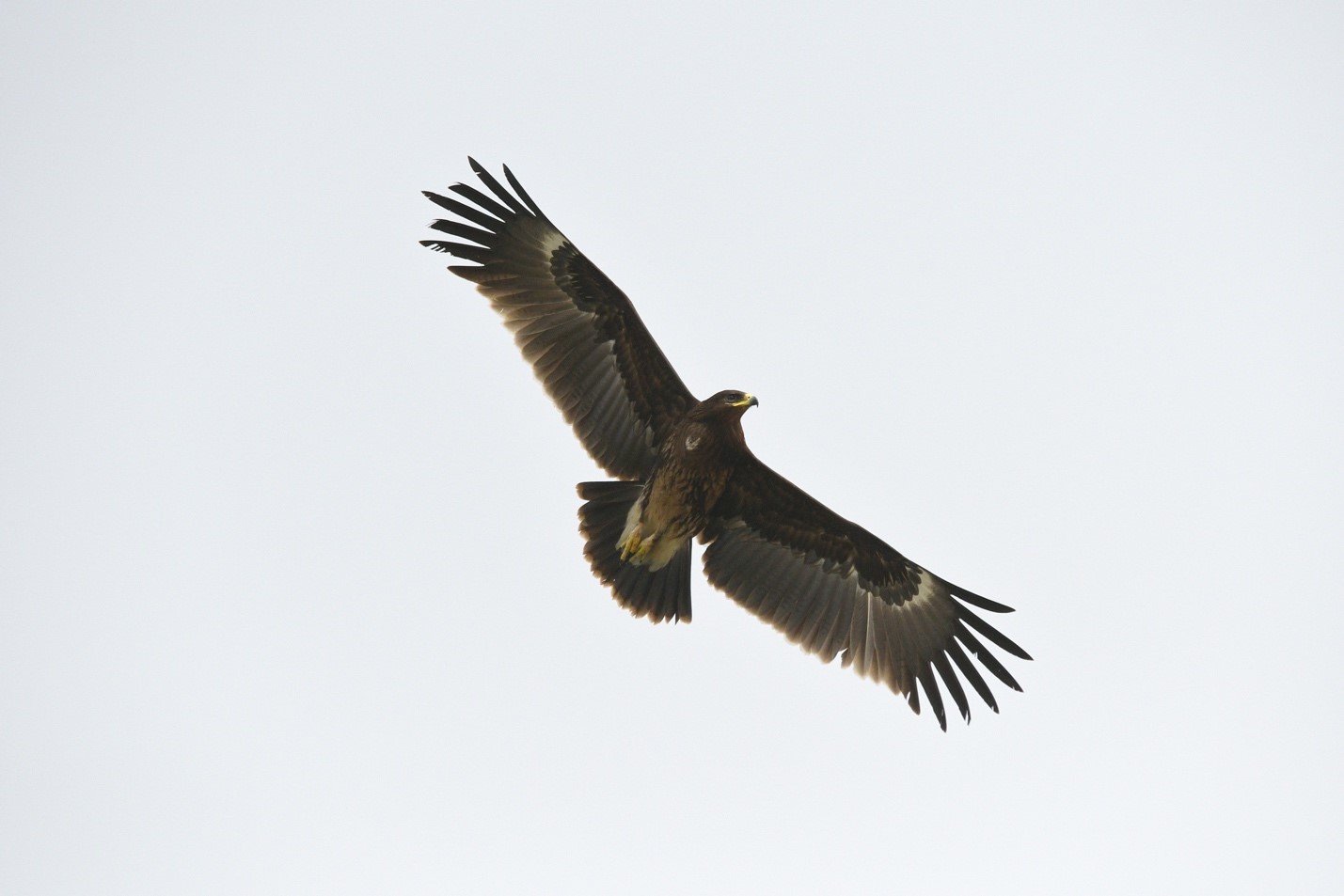
Arabian Oryx
Name: Arabian Oryx
Scientific Name: Oryx leucoryx
Arabic Name: Al Maha /المها العربي / W’Dhehi
Description: The Arabian Oryx is a medium-sized mammal weighing up to 80kg. Their colouration is white with darker facial and leg markings. Their horns are very long and straight or otherwise, slightly curved with male horns thicker and shorter than those of females. The Arabian Oryx can detect rainfall and fresh plant growth from up to 90km away. They are also true vegetarians consuming mainly grass. This specie is the national animal of several countries including UAE, Bahrain, and Jordan.
Key threats: Traditionally, the Arabian Oryx’ were hunted for their meat and hides. Habitat loss due to construction and development also played a role in the extinction of the species in the wild.
Conservation: Help to spread awareness about this iconic species that has been brought back from the brink of extinction. Be careful to avoid tufts of grass when desert driving, and refrain from leaving litter in nature that wildlife often accidentally eat.
